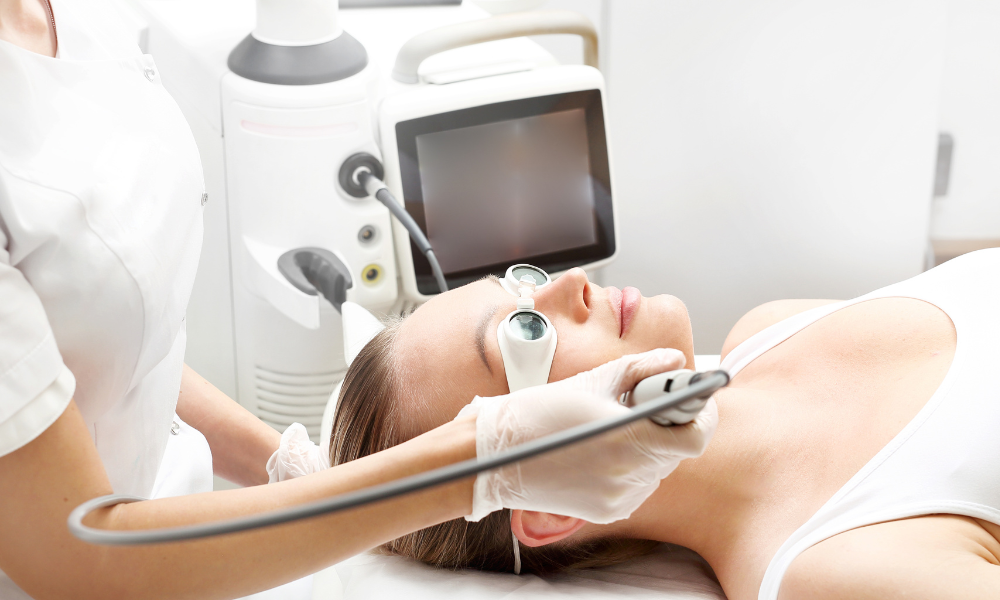Discover MLS Laser Therapy for TMJ/TMD Pain Relief at Pittsburgh Dental Sleep Medicine

Temporomandibular joint disorder (TMJ/TMD) is a relatively common condition that affects millions of people, causing pain and discomfort in the jaw joint and surrounding muscles. The temporomandibular joint (TMJ) is a hinge joint connecting the jaw to the skull, allowing for essential functions like speaking, eating, and yawning.
Dysfunction or misalignment of this joint can lead to various symptoms, including jaw pain, clicking or popping sounds, headaches, and difficulty opening or closing the mouth. At Pittsburgh Dental Sleep Medicine, we aim to provide innovative and effective solutions to address TMJ/TMD and improve the quality of our patients' lives.
In this article, we'll take a closer look at MLS laser therapy—its underlying principles, benefits, and how it effectively treats TMJ/TMD pain and discomfort. By understanding this advanced therapy, patients suffering from TMJ/TMD symptoms can make informed decisions about their treatment options and potentially find relief from their pain and discomfort.
Understanding MLS Laser Therapy
Multiwave Locked System (MLS) Laser Therapy is an advanced therapeutic technique that combines two synchronized diode lasers to deliver light energy to the affected area. One laser provides continuous emission to reduce inflammation, while the other works in pulsed mode to address pain and accelerate the healing process. These two synchronized lasers work in harmony to provide a gentle yet effective treatment for TMJ/TMD pain and inflammation.
The MLS Laser's unique combination of multiple wavelengths allows it to penetrate deep into tissues, providing targeted pain relief and reduced inflammation. It is essential to note that this therapy is not a one-time solution; rather, it requires a series of treatment sessions to achieve optimal and lasting results.
Benefits of MLS Laser Therapy for TMJ/TMD Treatment
The potential benefits of incorporating MLS Laser Therapy in TMJ/TMD treatment plans are vast, including:
- Non-invasive and Painless: Unlike more invasive treatment methods, such as surgery or injections, MLS Laser Therapy is a non-invasive and painless approach that does not require anesthesia or lengthy recovery times.
- Reduced Inflammation: MLS Laser Therapy helps to decrease inflammation surrounding the TMJ, resulting in reduced pain and increased joint mobility.
- Accelerated Healing: The light energy produced by the laser stimulates the body's natural healing process at the cellular level, enabling damaged tissue to repair more quickly and efficiently.
- Increased Range of Motion: As inflammation subsides and joint function improves, patients experiencing TMJ/TMD symptoms can enjoy a greater range of motion and improved jaw function.
- Minimal Risk of Side Effects: Given its non-invasive nature, MLS Laser Therapy poses minimal risk of side effects or complications when performed by a trained professional.
The MLS Laser Therapy Treatment Process
The process of receiving MLS Laser Therapy for TMJ/TMD symptoms usually consists of:
- Consultation and Evaluation: First, it's essential to speak with a dental professional to discuss your TMJ/TMD concerns and determine if MLS Laser Therapy is an appropriate treatment option for your specific situation.
- Treatment Plan Development: If it is determined that MLS Laser Therapy is a suitable option, a trained professional will develop a customized treatment plan that outlines the number of sessions needed, the frequency of treatments, and any additional supportive care required.
- Treatment Sessions: Each MLS Laser Therapy session, typically takes around 10-20 minutes. During this time, the dental professional will place the laser device's handpiece over the affected area, delivering light energy in a controlled and targeted manner.
- Post-Treatment Care: After each treatment session, it's crucial to follow your dental professional's instructions closely. This may include maintaining proper oral hygiene, engaging in jaw exercises, or adhering to a soft diet to promote healing and optimal results.
Patient Experience and Expectations
It's essential to approach MLS Laser Therapy with realistic expectations, understanding that healing takes time and multiple treatment sessions may be required to achieve the best results.
During treatment, most patients report feeling minimal discomfort, and some may even find the procedure soothing as the laser delivers a gentle warmth to the affected area. Many patients begin to notice significant improvement in their symptoms within just a few treatment sessions. However, it is crucial to remember that each patient's experience may differ, and the full extent of improvement may not be immediate.
Final Thoughts
Multiwave Locked System (MLS) Laser Therapy represents a cutting-edge, non-invasive, and virtually painless solution for patients grappling with TMJ/TMD pain and discomfort. By reducing inflammation, accelerating healing, and improving overall jaw function, patients may find lasting relief from their symptoms and a smoother path toward recovery.
If you suffer from TMJ/TMD symptoms and are considering exploring innovative treatment options, contact our team at Pittsburgh Dental Sleep Medicine. Together, we can discuss your concerns, evaluate your condition, and determine if MLS Laser Therapy could be the solution you have been seeking.
Disclaimer: Our blog articles serve to educate readers about various treatment options for sleep apnea, and TMJ disorders. It's important to understand that while we discuss multiple treatments in our posts, not all of these options may be accessible at all locations. We encourage you to reach out and schedule a consultation with us. This way, we can carefully devise a personalized treatment plan that caters to your specific needs.

